
This is a story about the future and missed opportunities. Lessons learned in content that applied psychological principles, social media literacy, interdisciplinary thinking and tech-solutions focusing on diversity. It’s 2004 and 6 months later we’ve cracked it
Few orgs are interested but at a cafe I meet with @DomPonsford Editor of the UK @pressgazette. It’s one of the UK’s industry magazine.

Inspired by Tom Cruise’s Minority Report, I think how can you replicate that experience online with journalism at its heart? It takes several prototypes, lots of sleepless nights, and a tidy bit of software, now deprecated, called Flash.
Dominic, the editor, gives it his seal of approval in a full page write up. He sees the Minority Report reference without prompting.
Just over eight million homes in the UK have broadband so it’ll be a stretch for the site to sell its video breakthrough down the pipe — at least now. But my reckoning, the future can catch up with the concept, but there’s something else.
The Economist too get in touch. They’re interested in the other concept of video-hyperlinking. Imagine watching a 40 second interview. As the play head reaches certain key points, particularly the end, you can click to extend the interview, or otherwise it rejoins the main story timeline.
Viewmagazine was created out of frustration, before becoming a labour of love. Media and online is largely still not diverse. So the emphasis is to create a platform:
- to meet meet the needs of diverse content/people — like me.
- apply @manovich aesthetics on data base and cinema, “Language of New Media” — a CD rom online. In 1999, an artist introduces me to Manovich. His book is seminal and draws on one of Russia’s cinema auteurs Dziga Vertov with a fresh understanding of the next iteration of cinema or the web.
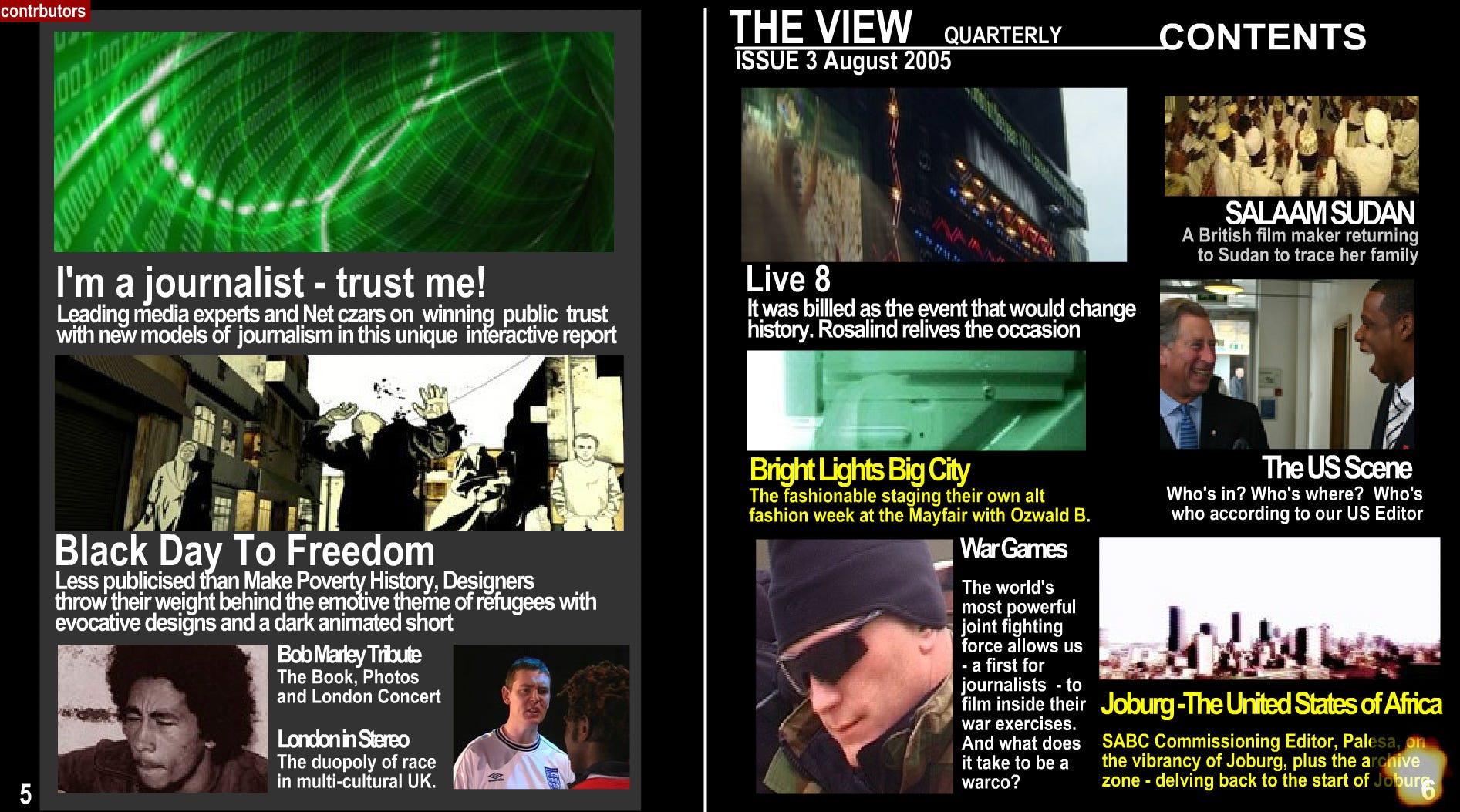
Soon advertisers will email me to place their adds on the front page. Money not to sniff at. But I continually turn them down because of perceived brand dilution. I could do with the money.
More importantly I could do with a business partner and cash from commissioners to green light several immersive pieces of content for the follow up e.g. super cars and F1 phenomenon Ian Hamilton. I plough on.
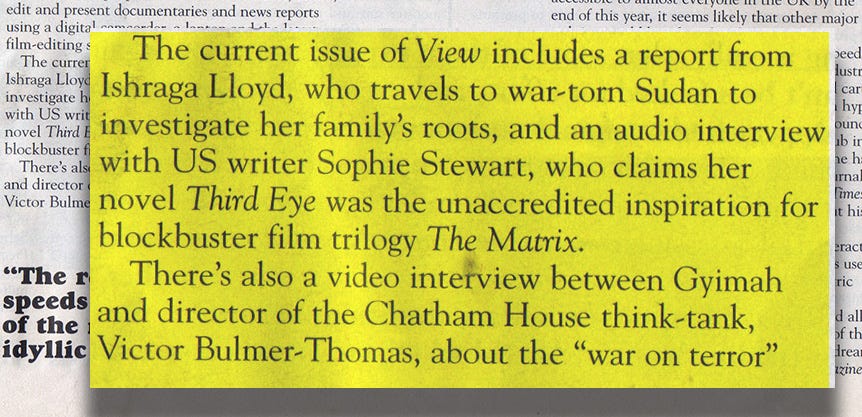
All the content has been exclusively sourced. Take the interview with Sophie Stewart. She alleges her script was used as the basis for The Matrix after she sent it in during a competition and she says it found itself to the producers. Three Matrix fans in a radio studio in London interview her.
Psychologically, key trigger descriptive words for memorisation were integral to the articles. And the text followed Jakob Nielsen’s research on scannable text and cognitive ease.
One evening I get a call from the US. Could I fly out to DC to pitch my prototype? I do.

Viewmagazine only goes and wins 1st place. The funniest thing is I’d presented the magazine with an editorial team that was made up of eight people to give the project some weight, but at the awards had to fess up that it was me doing the design, writing, coding and film editing.

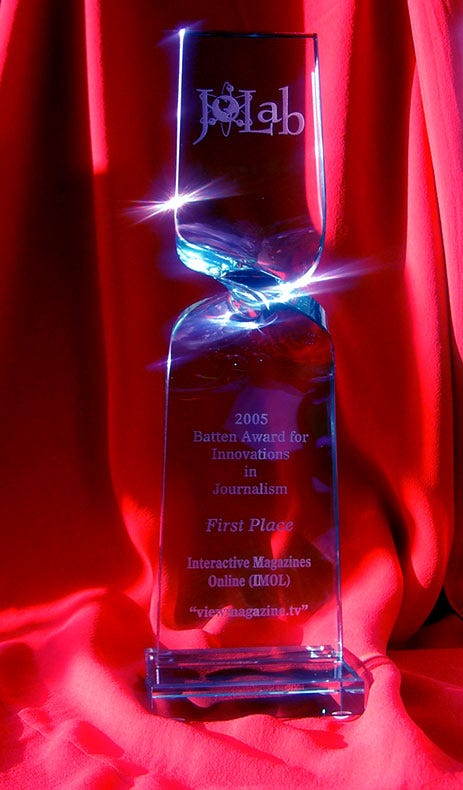
And if you want to know how seriously media take the awards, years later The Guardian newspaper win it and claim to be the first Brits ever to bag the award.

And then I’m caught in a dilemma — a combination of the Halo effect which is the tendency to create a good impression to influence others.
The win brings more attention which should bode well for credibility. It does but not for the site. Mostly people want to know about what I did rather than supporting the magazine’s growth.
US judges are impressed. In the UK not everyone agrees when the site is submitted to the New Statesman. Judges are baffled. The site should let Youtube handle video, and this stuff e.g. gamification leave that to sci-fi movies.

Meanwhile, I’m in dire need of a social media strategy. Remember Facebook is barely years old and there’s no twitter. I spend some money on Google ad words, but it’s not yielding the kind of attention to bring VCs to the site to officially launch it.
There’s another psychological effect that may help viewmagazine.tv, the Authority Principle. This explains people’s penchant for association with leaders. But there’s a snag, here too.
Video won’t work online they say. One of my first International talks is ‘Restoring the Trust” in Austin Texas. I’m on a panel with Craig Newmark (Craig’s List) etc. RSS, Ad spend, Facebook are key subjects. Video isn’t. In the talk I get in one comment.
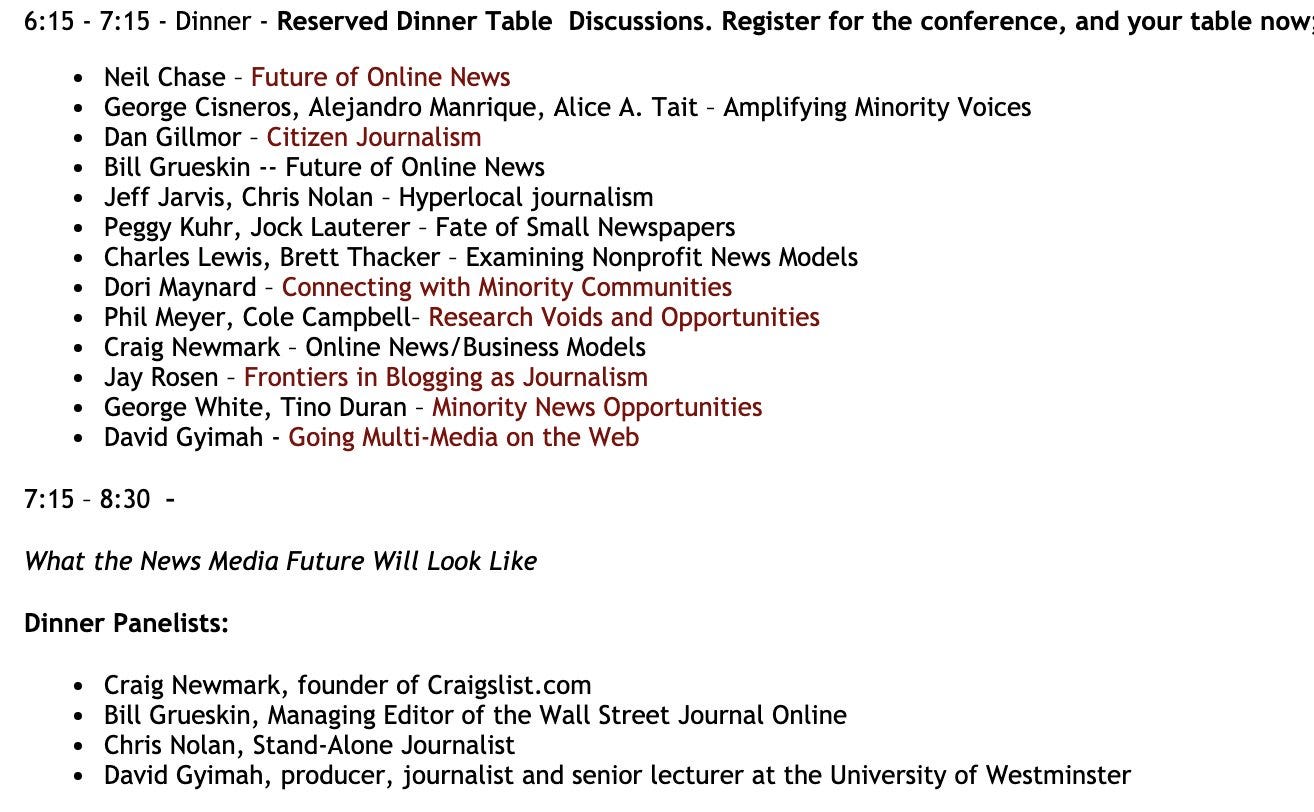
Then the biggest threat to newspapers business model emerges with the BBC intending to launch hyper local sites. @PA look around and ask if anyone can train Britain’s regional newspapers to thwart the BBC’s plans. I get a call. Can it be done? Can newspaper journalist be trained in two weeks to become video journalists?
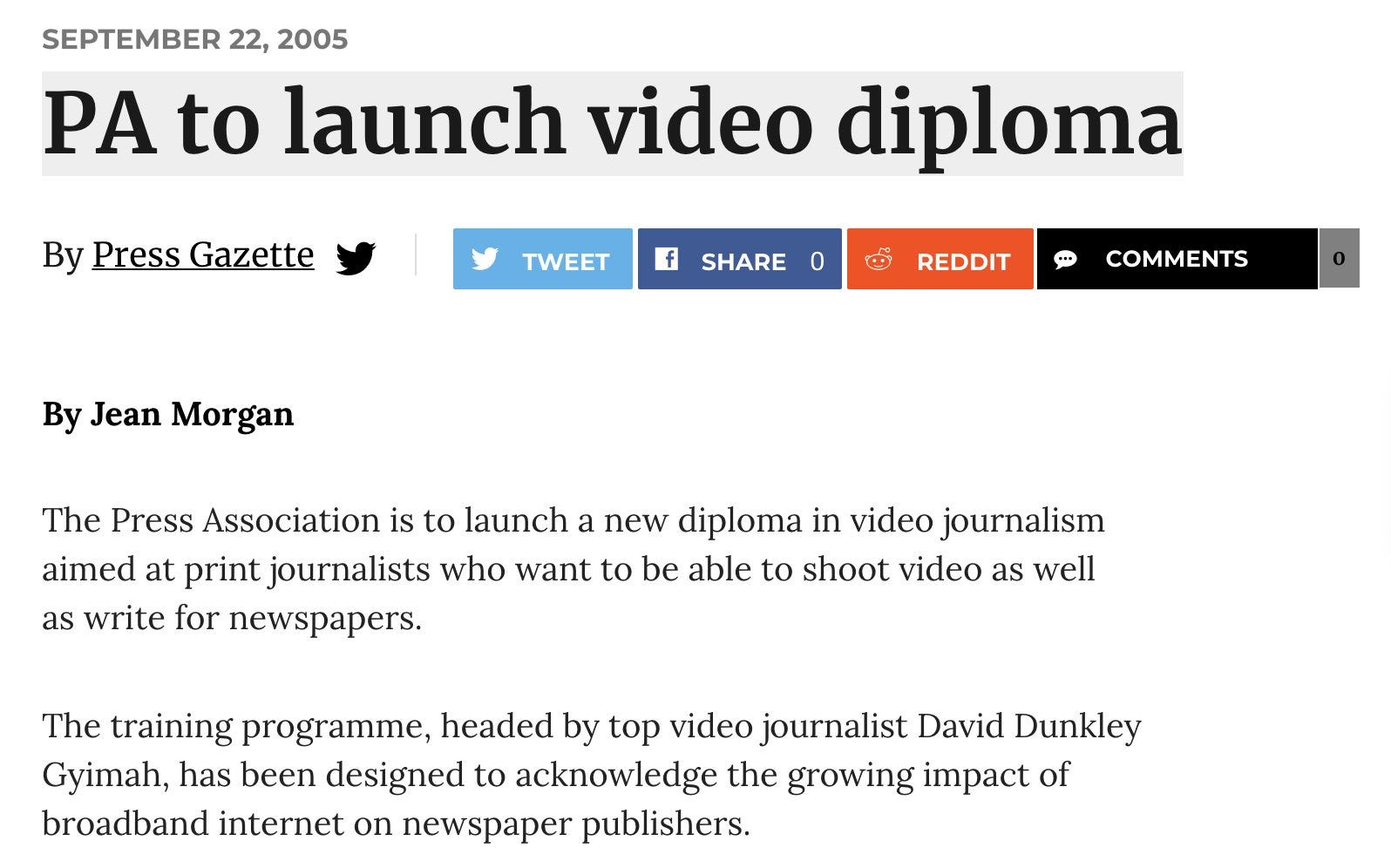

On the eighth day of training the journalist have to solve a real murder case as if in real time. I turn from trainer to cinema journalist. The film wins a global videojournalism award in Berlin.
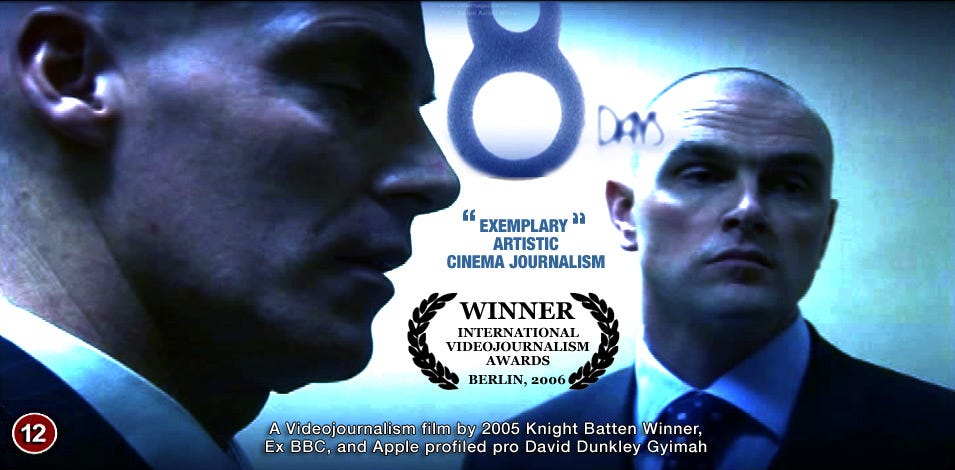
Video’s uptake continues online. Several brands ff up for training, such as the Financial Times and World of Newspapers.
Sites like Rocketboom, F1 create variations on video content. At the BBC, I attend an online news association meeting in which the BBC is experimenting with embedded video for the first time. Meanwhile ,content like ‘Charlie Bit Me’ demonstrates audiences want to share video stories which don’t have to ff a news form.
Then one video turns industry’s conventional wisdom completely on its head, Kony 2012. It’s a half hour doc that apes cinematic techniques and cunningly and smartly obscures its subject matter by introducing sci-fi tropes and innovation at the film’s head. Its phenomenal download baffles execs. They see the numbers but remain ambivalent.
And then the industry is rudely woken up with the arrival of @Vice What is Vice doing that others aren’t? It’s a brand that knows its audience and marketing, moving online to TV.
It’s playing with form and storytelling with a cinema bent. It’s like 21st century BBC ‘Reportage’.
How VICE Magazine has become the voice of a generation
Media commentator David Dunkley Gyimah, a former reporter on the BBC’s cutting edge youth programme REPORTAGE, and an…
medium.com
Meanwhile viewmagazine has atrophied. The project I really want to see take off is in the Net’s wasteland. It’s methodology of human-centered design storytelling and thinking, it’s video making with empathy embracing several features of cinema has been folded into modules and training.
It is the early gathering around these new technologies by those with influence able to shape new behaviours that creates sustainable models and winners.
Netflix challenging Blockbusters is itself a story of the future and missed opportunities, cum marketing. Stories remain untouched.
What is Cinema Journalism and Why it Matters Most for New Generations
“The stories have really brought worldly conflicts to the table and have shown the disparities of diverse human views”…
medium.com
So looking back on 16 yrs, some lessons. Brand maturity requires marketing budget (see Netflix) or savvy social media growth skills. Each is effortful. The next iteration of video draws on something Apple picked up from viewmagazine those years back. Home streaming just became the norm. No one could have predicted the catastrophic pandemic. The technology and behaviour was moving in the direction of home-branding, nonetheless.
#AI will up end the industry mining human behaviour on a scale not yet recognised. Video hyperlinking is a norm. Here cinema excels and if #AIs determining film cuts and patterns is anything to go by, ( c.f @IBM #Watson) things will get interesting. And the next ten years? Universal Internets will atrophy: China, India, whose next? Firewalls in each states. Meanwhile, this year on the BBC news storytelling of a ‘radical’ kind caught up with future.































